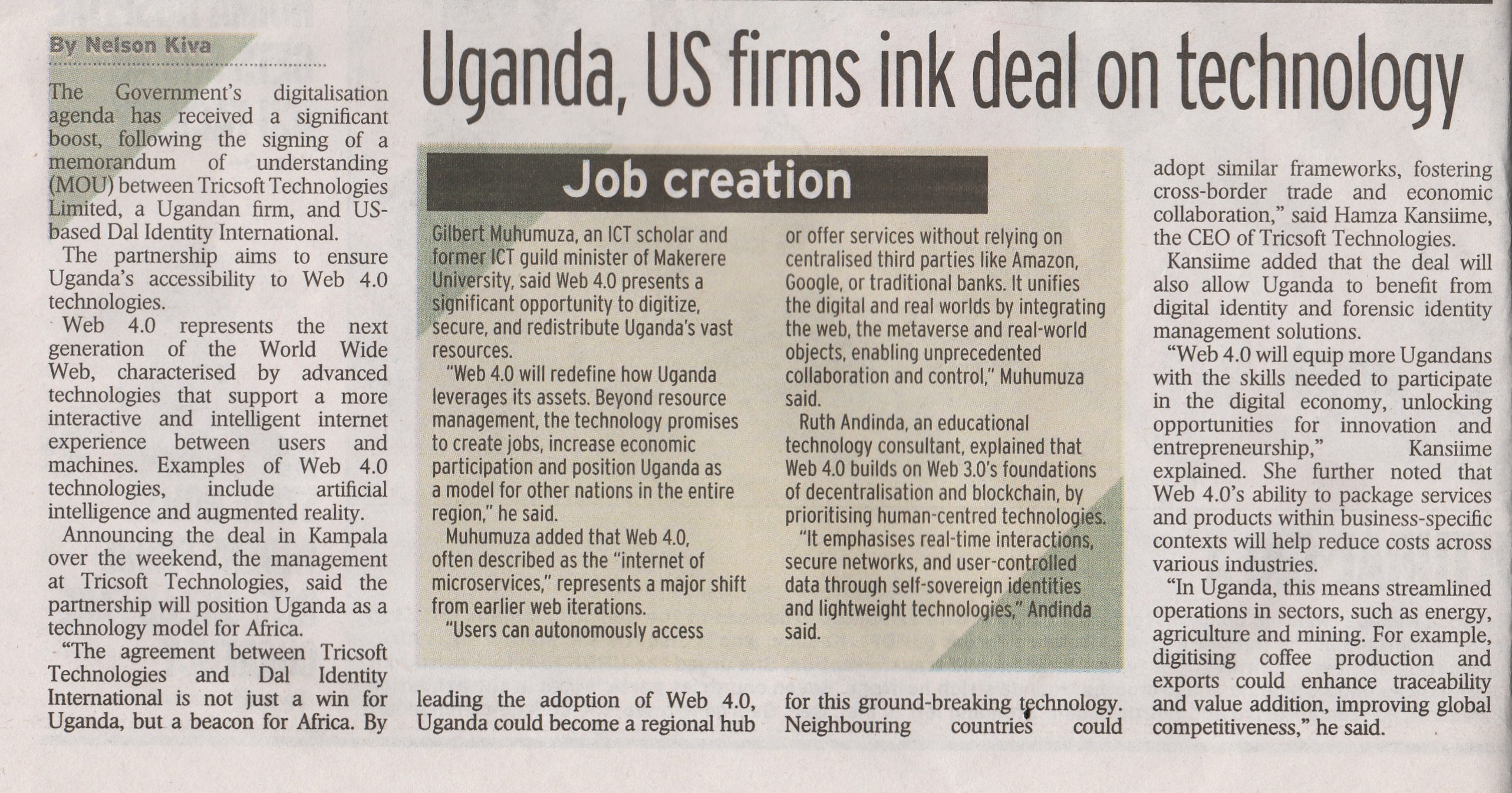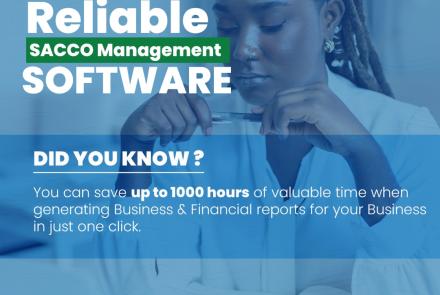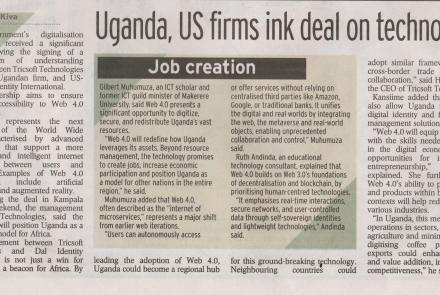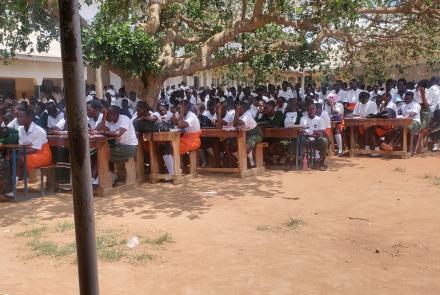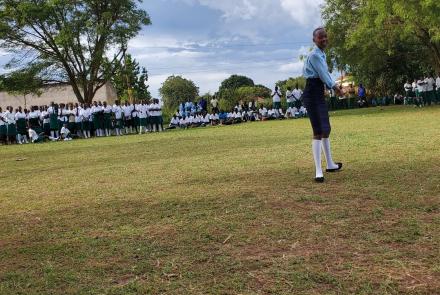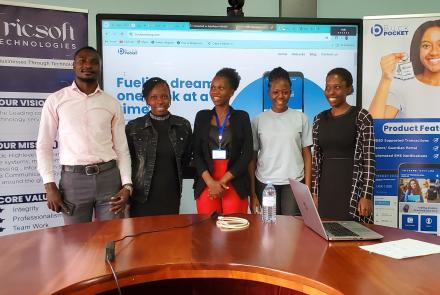Tricsoft Technologies and DAL Identity International Partner for Advanced Technology Transfer
The government digitalisation agenda has been boosted following a memorandum of understanding (MOU) between Tricsoft Technologies Limited (Uganda) with Florida-based Dal Identity International to ensure Uganda’s accessibility to Web 4.0 technologies.
Announcing the deal in Kampala over the weekend, the management at Tricsoft Technologies indicated that the partnership aims to introduce Web 4.0 technologies in Uganda and that the East African country will serve as a technology model for Africa.
“The agreement between Tricsoft Technologies and Dal Identity International is not just a win for Uganda but a beacon for Africa. By spearheading Web 4.0 adoption, Uganda could become a regional hub for this groundbreaking technology. Neighboring countries could adopt similar frameworks, fostering cross-border trade and economic collaboration,” Hamza Kansiime, chief executive officer at Tricsoft Technologies said.
He added that this will also allow Uganda to benefit from digital identity management and forensic identity management solutions.
“These include tools like fit for duty solutions, customized hardware, and software products provided through an Identity-as-a-service (IDaaS) model,” Kansiime said.
Web 4.0 which is relatively easy to learn according to Kansiime, will enable more Ugandans to gain the skills needed to participate in the digital economy by harnessing
opportunities for innovation and entrepreneurship.
“Uganda’s youth, who make up over 75% of the population, stand to benefit immensely from these new opportunities which addresses the problem of unemployment among the youth,” Kansiime said.
He added that web 4.0’s ability to package services and products within business-specific
contexts shall, among others unlock new profit centers and reduce costs across industries.
“In Uganda, this means streamlined operations in energy, agriculture, and mining
sectors. For example, digitising coffee production and exports could enhance traceability and value addition, improving global competitiveness,” Kansiime said.
Gilbert Muhumuza, an ICT scholar and former ICT guild minister at Makerere University, said that Web 4.0 brings a big opportunity to digitise, secure, and redistribute Uganda’s vast resources.
“From energy commodities like oil and solar power to agricultural products such as coffee and maize, and precious metals like gold and copper. Web 4.0 shall redefine how Uganda leverages its assets. But beyond resource management, the technology promises to create jobs, enhance economic participation, and position Uganda as a model for other nations in the region,” he said.
Muhumuza noted that Web 4.0 often described as the "internet of microservices," represents a big shift from earlier iterations of the web.
“Unlike web 2.0, which centered around user-generated content and social connectivity, and web 3.0, which emphasised decentralisation and blockchain, web 4.0 focuses on autonomy, interoperability, and contextualised services,” he said.
The key features of web 4.0 according to Muhumuza, include digital twins and microservices providing for virtual replicas of real-world objects and environments facilitate simulations on top of interactions that align with industry-specific needs.
“Users can autonomously access or offer services without reliance on centralised third parties like Amazon, Google, or traditional banks. It unifies digital and real worlds by integrating the web, the metaverse, and real-world objects. Web 4.0 enables unprecedented collaboration and control,” Muhumuza said.
He added; “In a nutshell, web 4.0 places control back in the hands of individuals, allowing them to own, share, and retract access to digital assets with high security and efficiency.”
According to Ruth Andinda, an educational technology consultant, Web 4.0 builds on the foundation of Web 3.0, which introduced decentralisation and blockchain, by prioritising
human-centered technologies.
“It emphasises real-time interactions, secure networks, and user-controlled data
through self-sovereign identities (RSSIs) and lightweight technologies. These features make Web 4.0 particularly suited for Uganda, where challenges like limited connectivity, high costs, and uneven access to digital tools persist,” Andinda said.
She added; “Uganda’s Vision 2040 envisions transforming the country into a prosperous, middle-income nation by embracing technology and innovation. Among the cutting-edge tools to achieve these goals, Web 4.0 stands out as a game-changer. It offers the potential to address many of Vision 2040’s objectives, with transformative impacts on digital inclusion.”
“Web 4.0 unlocks opportunities for Ugandans to participate in the global digital economy. Its secure platforms and seamless interoperability allow skilled workers to connect with international job markets, offering remote work possibilities that were previously inaccessible,” he said. End.
Story by Nelson Kiva (New Vision)

